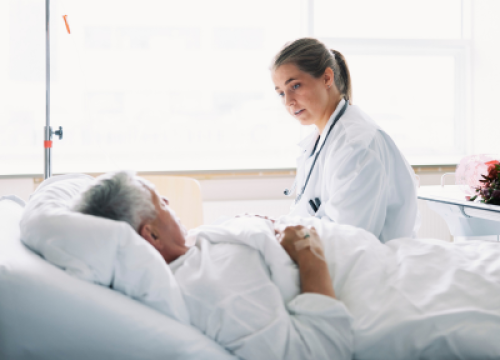About Parkinson's Disease
Parkinson’s disease (PD) is a brain condition that causes movement and non-movement symptoms.
Quick Facts
- About 70% of people with PD experience tremor.
- PD symptoms can vary throughout the day, and may worsen with anxiety, fatigue or as medication wears off in between doses.
- Regular exercise can help manage PD symptoms and improve quality of life.
- Carbidopa/levodopa (Sinemet) is the “gold standard” medication for PD.
- Treatment adjustments are often necessary as symptoms progress.
Parkinson’s disease is a condition that affects the brain and causes the loss of cells that produce dopamine — a chemical that helps control movement, mood and more. PD worsens over time, but medications, exercise and other treatments can help manage symptoms and improve quality of life.
How common is Parkinson's?
Nearly one million people in the U.S. and 10 million people around the world are living with PD. About 90,000 Americans are diagnosed each year. It is the second most common progressive neurological condition after Alzheimer’s disease. The number of people with PD is expected to rise in the next 20 years as our population ages.
What are the symptoms of Parkinson's?
PD affects everyone differently, but the most visible and well-known signs are movement symptoms such as tremor, slowness, stiffness and balance problems. Many people also experience non-movement symptoms that can impact daily life as much or more than movement challenges. These can include depression, sleep issues, thinking changes and others.
To learn about the early signs of PD, visit Parkinson.org/EarlySigns.
How does Parkinson's progress?
For most people with PD, symptoms change slowly over many years. While some may notice only mild changes at first, symptoms usually increase over time. The pace of this progression can vary from person to person.
Who does Parkinson's affect?
Parkinson’s is often diagnosed after age 60, but about 4% of people with PD are diagnosed under 50, a condition known as young-onset Parkinson’s disease (YOPD). Men are 1.5 times more likely to have PD than women, and some areas and ethnic groups experience higher rates.
What causes Parkinson's?
Researchers believe that Parkinson’s is caused by a combination of genetic, environmental and lifestyle factors. About 10 to 15% of people with PD have a genetic link.
Learn about our genetics study, PD GENEration: Mapping the Future of Parkinson's Disease, a global initiative that offers genetic testing for PD-related genes and genetic counseling at no cost for people with Parkinson’s. Visit Parkinson.org/PDGENEration.
How is Parkinson's diagnosed?
Doctors diagnose Parkinson's based on a person’s symptoms, medical history and a physical examination. Sometimes additional lab tests and imaging can help rule out other conditions that may look like PD.
To consider a diagnosis of Parkinson’s, a person must have bradykinesia (slow movement) along with one or more of the following:
- Shaking or tremor in a limb that occurs while it is at rest
- Stiffness or rigidity of the arms, legs or trunk
- Trouble with balance and falls
Getting a Parkinson's diagnosis can take time. When symptoms first appear, many people begin by talking to their family doctor, who may refer them to a neurologist if there are signs of PD. Some neurologists, called movement disorder specialists, have extra training in diagnosing and treating PD and other movement disorders.
What strategies are used to address symptoms?
Parkinson’s affects each person differently, but most people need medications that boost, mimic or replace dopamine to manage their condition. Studies show that regular exercise can also improve movement and non-movement symptoms. For some, surgery may be part of their treatment plan.
People with PD often have a range of symptoms, so it is important to build a team of healthcare professionals. This team can include physical, occupational and speech therapists, as well as other specialists like mental health professionals, a urologist or a gastrointestinal doctor. To learn more about medications and other treatments for Parkinson’s, visit Parkinson.org/Treatment.
Related Materials
My Parent Has Parkinson's. What Does It Mean?
Managing "Off" Time in Parkinson's
Medications for Non-motor Symptoms
Related Blog Posts

From Fear to Care: How to Address Parkinson’s Hospital Risks

Empowering Black and African American Communities with Parkinson’s: Education and Advocacy in Action
